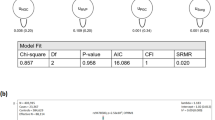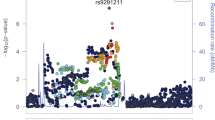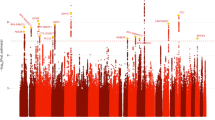Abstract
Genetic association studies investigating the role of the +118A allele of the human μ-opioid receptor gene in risk for alcohol dependency have produced inconsistent findings, possibly because of the failure to recognize sampling methodology difficulties inherent in association studies of polygenic disorders. We examined the frequency of the AA genotype and A allele in several groups of substance-dependent cases, unrestricted controls, and super controls screened for the use of alcohol and cigarettes. Our findings and analyses suggest that the OPRM1 +118 polymorphism is a general risk gene for substance dependence, but is not specific to a particular substance. The nature of the conferred risk is likely to be in use of multiple substances, but it is not yet determined if the risk could be expressed in severity of use of any particular substance. The contribution of the gene to risk for substance dependence is small, and is detected most easily in studies that use control samples that are screened for all forms of substance dependence.
This is a preview of subscription content, access via your institution
Access options
Subscribe to this journal
Receive 12 print issues and online access
$259.00 per year
only $21.58 per issue
Buy this article
- Purchase on Springer Link
- Instant access to full article PDF
Prices may be subject to local taxes which are calculated during checkout
Similar content being viewed by others
References
Kessler RC, Crum RM, Warner LA, Nelson CB, Schulenberg J, Anthony JC . Lifetime co-occurrence of DSM-III-R alcohol abuse and dependence with other psychiatric disorders in the national comorbidity survey Arch Gen Psych 1997 54: 313–321
Merikangas KR, Stolar M, Stevens DE, Goulet J, Presisig MA, Genton B et al. Familial transmission of substance use disorders Arch Gen Psych 1998 55: 973–979
Bierut LJ, Dinwiddie SH, Begleiter H, Crowe RR, Hesselbrock V, Nurnberger JI et al. Familial transmission of substance dependence: alcohol, marijuana, cocaine, and habitual smoking Arch Gen Psych 1998 55: 982–988
Heath AC . Genetic influences on alcoholism risk: a review of adoption and twin studies Alc Hlth Res Wrld 1995 19: 166–171
True RW, Heath AC, Scherrer JF, Waterman B, Goldberg J, Lin N et al. Genetic and environmental contributions to smoking Addict 1997 92: 1277–1287
True RW, Xian H, Scherrer JF, Madden PAF, Bucholz KK, Heath AC et al. Common genetic vulnerability for nicotine and alcohol dependence in men Arch Gen Psych 1999 56: 655–661
Town T, Abdullah L, Crawford F, Schinka J, Ordorica P, Francis E et al. Association of a functional μ-opioid receptor allele (+118A) with alcohol dependency Am J Med Gen Neuropsych Gen 1999 88: 458–461
Bergen AW, Kokoszka J, Peterson R, Long JC, Virkkunen M, Linnoila M et al. Muopioid receptor gene variants: lack of association with alcohol dependence Mol Psychiatry 1997 2: 490–494
Sander T, Gsheidel N, Wendel B, Samochowiec J, Smolka M, Rommelspacher H et al. Human μ-opioid receptor variation and alcohol dependence Alc: Clin Exp Res 1998 22: 2108–2110
Gelernter J, Kranzler H, Cubells J . Genetics of two μ opioid receptor gene (OPRM1) exon I polymorphisms: population studies, and allele frequencies in alcohol- and drug-dependent subjects Mol Psychiatry 1999 4: 476–483
Bond C, LaForge KS, Tian M, Melia D, Zhang S, Borg L et al. Single-nucleotide polymorphism in the human μ-opioid receptor gene alters beta-endorphin binding and activity: possible implications for opiate addiction Proc Natl Acad Sci 1998 95: 9608–9613
Small BJ, Graves AB, McEvoy CL, Crawford FC, Mullan M, Mortimer JA . Is apolipoprotein E a risk factor for cognitive impairment in normal aging? Evidence from a population-based sample of older adults Neurology 2000 54: 2082–2088
Comings DE . Why different rules are required for polygenic inheritance: lessons from studies of the DRD2 gene Alcohol 1998 16: 61–70
Hill SY . Alternative strategies for uncovering genes contributing to alcoholism risk: unpredictable findings in a genetic wonderland Alcohol 1998 16: 53–59
Pritchard JK, Rosenberg NA . Use of unlinked genetic markers to detect population stratification in association studies Am J Hum Gen 1999 65: 220–228
Pritchard JK, Stephens M, Rosenberg NA, Donnelly P . Association mapping in strutured populations Am J Hum Gen 2000 67: 170–181
Acknowledgements
This study was supported in part by the Department of Veterans Affairs. The authors also extend their gratitude to Diane and Robert Roskamp for their generous contribution in completing this work.
Author information
Authors and Affiliations
Corresponding author
Rights and permissions
About this article
Cite this article
Schinka, J., Town, T., Abdullah, L. et al. A functional polymorphism within the μ-opioid receptor gene and risk for abuse of alcohol and other substances. Mol Psychiatry 7, 224–228 (2002). https://doi.org/10.1038/sj.mp.4000951
Received:
Revised:
Accepted:
Published:
Issue Date:
DOI: https://doi.org/10.1038/sj.mp.4000951
Keywords
This article is cited by
-
Association of OPRM1 with addiction: a review on drug, alcohol and smoking addiction in worldwide population
Egyptian Journal of Medical Human Genetics (2022)
-
Opioid receptors: drivers to addiction?
Nature Reviews Neuroscience (2018)
-
Lack of associations of the opioid receptor mu 1 (OPRM1) A118G polymorphism (rs1799971) with alcohol dependence: review and meta-analysis of retrospective controlled studies
BMC Medical Genetics (2017)
-
Association of the OPRM1 Variant rs1799971 (A118G) with Non-Specific Liability to Substance Dependence in a Collaborative de novo Meta-Analysis of European-Ancestry Cohorts
Behavior Genetics (2016)
-
Variation in regulator of G-protein signaling 17 gene (RGS17) is associated with multiple substance dependence diagnoses
Behavioral and Brain Functions (2012)



